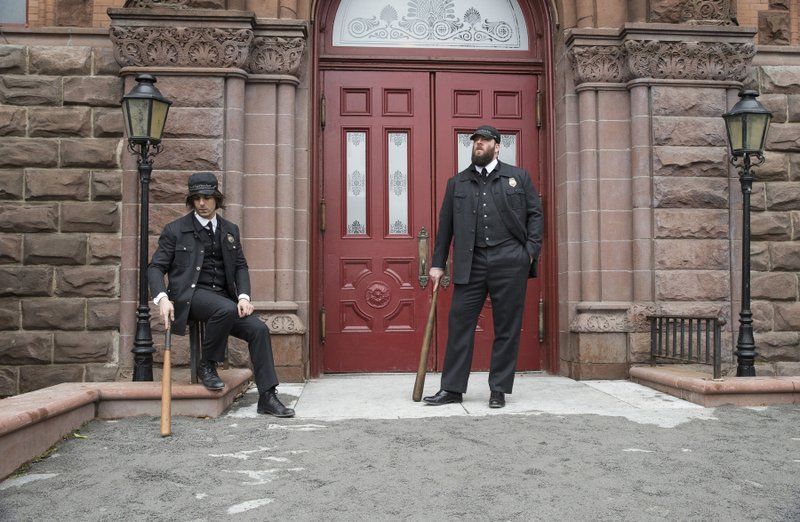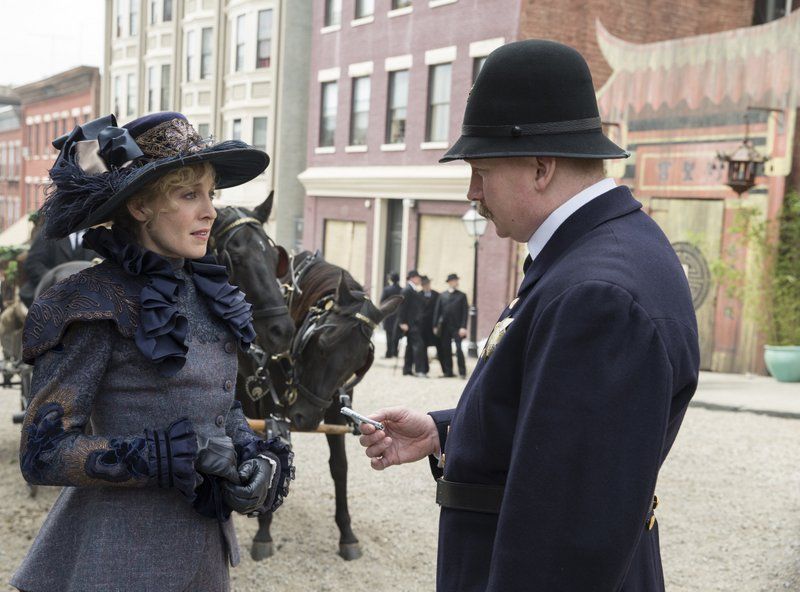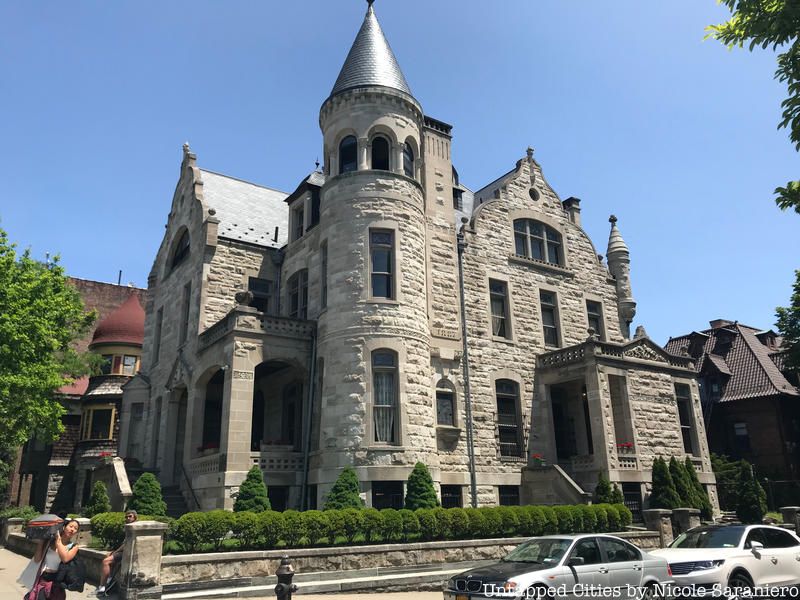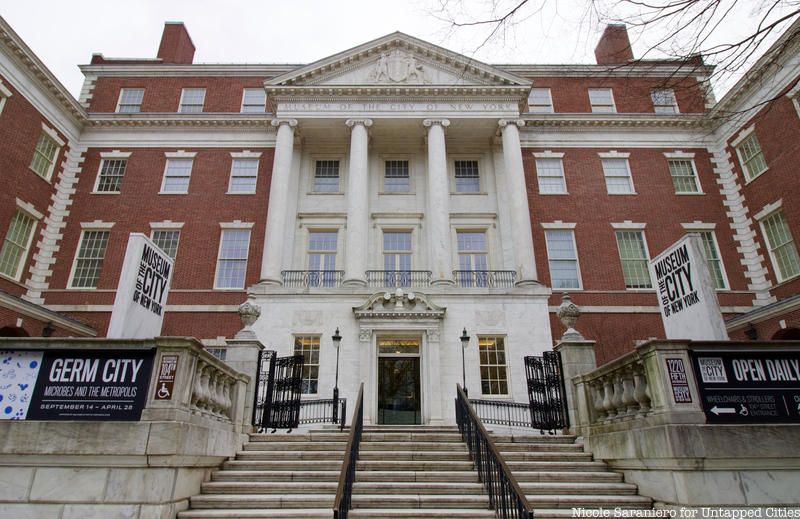NYC’s Forgotten ‘War on Christmas Trees’
Discover how an obscure holiday crackdown affects festive street vendors today!


When Steven Soderbergh retired from directing movies last year he announced that “movies don’t matter anymore.” Fans of the director’s work were stunned. Since 1989 with his first independent feature Sex, Lies and Videotape; Soderbergh has been one of the few directors in cinema who has truly kept audiences guessing his next move. Almost two years into his “retirement” there is no word of Soderbergh returning to the cinema. To some, that might be viewed as a bad sign; Soderbergh, however, has not been laying dormant. On the contrary, since “retiring” he has been working constantly. He became very active on Twitter, in the most Soderbergh-y way possible, making a novella titled GLUE; he has spliced together both versions of Psycho, and, even more bizarrely awesome, he re-edited Spielberg’s Raiders of The Lost Ark, transforming it into a black and white silent film.
He has done all of this, including directing an off-Broadway play, getting into the liquor business and once again finding himself in the director’s chair. Soderbergh’s return to the set was not for a feature, or even for a TV film. Perhaps inspired by the work of Cary Fukunaga on True Detective, Soderbergh decided to do something similar and direct every episode of a project he come across called The Knick. Soderbergh directs (as well as edits under his pseudonym Mary Anne Bernard ) every episode of the series first season, which follows the life and exploits of Dr. John Tackery, head surgeon of The Knickerbocker Hospital and its staff in 1900 New York City.
Ever meticulous, Soderbergh wanted to film exactly where the series is set, shutting down an entire city block to truly let his actors and crew feel as if they are living in a different historical era. To celebrate its much celebrated first season, we give you a listing of locations used by Soderbergh in The Knick:

Photo: Paul Schiraldi/Cinemax
The Knickerbocker Hospital (or “The Knick” as it is called) is one of three major hospitals in New York City, the only one located in lower Manhattan. Not to be confused with the Knickerbocker Hotel in Times Square, The Knick is where most of the series plot and conflict takes place. The Hospital is inspired by a real hospital of the same name, but was located much further uptown in Harlem. The Knick was was founded to help the poor of New York, as the other major hospitals moved further uptown.
The actual location of the hospital used in the series is in neither Harlem nor in lower Manhattan. The Knickerbocker Hospital exterior is the Boys High School in Bedford-Stuyvesant, Brooklyn, now the Bedford Stuyvesant Preparatory High School and and Literary Center at 832 Marcy Avenue. The building (which is used as the entrance to The Knick) was designed from 1891 to 1892 by architect James M. Naughton. Additions to the building were done by famed superintendent of the New York City schools, Charles B. Snyder, responsible for the design of over 350 schools.
As Matthew A. Postal and Andrew Dolkart write in the book Guide to New York City Landmarks, the Boys High School “was considered one of the most important public schools in Brooklyn; its new home was therefore conceived as a major architectural monument visible throughout much of Central Building. The Romanesque Revival style building notable for its dormers, gables, turrets and other architectural details–was landmarked in 1975 and restored in the 1990s by the firm Beyer Blinder Belle, which also handled the restoration of Grand Central Terminal. As an Untapped Cities reader points out, notable alumni have included Man Ray, Norman Mailer, Isaac Asimov, and Aaron Copeland.

Photo: Paul Schiraldi/Cinemax
Broome Street and Orchard Street in the Lower East Side were transformed into the New York City at the turn of the century. Vintage signage was put atop current, while stores were still in operation. Dirt and hay, along with prop dead horses, lined the streets.
Dr. John Thackery is head surgeon of The Knick, but he’s also an inventor and a cocaine addict. Remember, this is a time where you can get cocaine from your local drugstore. Rude, possibly racist, confident and extremely talented, Thackerey is the best role Clive Owen has gotten in years. While he is not someone you would want to consider a friend, John is someone you would want saving your life. The only thing that can stop John from being the incredibly intelligent and masterful surgeon that he is, is if he is without his cocaine fix.
Early in the season, a nurse is sent out to fetch Dr. Thackery because he is needed for surgery. The nurse rushes after him but she doesn’t know where he lives. Another surgeon quickly tells her that he lives on 28 Waverly Place. The actually film location is unconfirmed because 28 Waverly currently the NYU Silver Center for Arts and Sciences.

The Robertsons are the family that finances the hospital. Through the money of the Robertsons, the daughter of Captain Robertson, Cornelia Robertson, is put in charge of the hospital’s social welfare office. The family also placed Algernon Edwards in his deputy position in The Knick, becoming the only black surgeon to work in a white New York City hospital.
Rich, snobby, sexist and racist, Captain Robertson epitomizes the patriarch of old New York families. And like many rich folk during this time, the Edwards moved out of the lower part of Manhattan and up to neighborhoods in Harlem. The location Soderbergh uses as the exterior of the Robertson’s home is the landmarked James Bailey House, located on 10 St. Nicolas Place in Harlem. The building, built for half of the circus duo of Barnum & Bailey is built in the Romanesque Revival style. The building was used as a retirement home from 1957 to 2008, to which it sold to an unknown buyer for $1.5 million.

The Museum of The City of New York is only seen for a moment in the eight episode of the season, but it is a shot neither wasted nor to be taken for granted. Why Soderbergh decided to film this behind a gate in Central Park, through a bare tree is something that will probably not be discovered until The Knick is revisited in repeat viewings.
The MCNY was originally based in Gracie Mansion and moved onto its current home at 1200 5th Avenue in East Harlem in 1932. The museum showcases the many facets of NYC’s storied history with exhibits covering the effects of Hurricane Sandy, the photography of 60s era Coney Island and a fast-paced New York City, and the NYC graffiti movement.

Photo: Paul Schiraldi/Cinemax
Remember when we mentioned that our protagonist, Dr. John Tackery was a cocaine addict? Well you can also add opium to his many vices, which also include Chinese prostitutes. To deal with the stress and pressure of being the head of surgery at The Knick, John sometimes spends entire nights at a Chinese brothel located on 467 Mott Street. The series begins with one of the ladies of the brothel waking “Johnny” to inform him of the time, to which he steps out and climbs aboard a carriage to The Knick.
The address is either fictional or doesn’t exist anymore, as Mott Street ends at #321. Regardless, prostitution was rampant during the early 20th century in the lower parts of Manhattan.
The Knick has been renewed for a second season. With all the attention and praise the series has received, we hope that the scope of The Knick expands, with Soderbergh continuing to transform areas of New York City and giving us opportunities to discuss not only his directorial prowess, but also the history of the city.
If you think you have a chance at taking on Dr. Algernon Edwards in a street fight, contact the author @ChrisLInoa
Subscribe to our newsletter